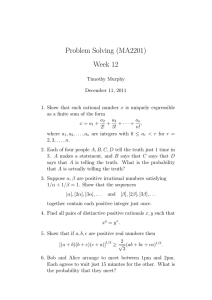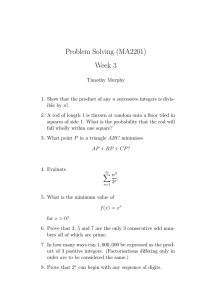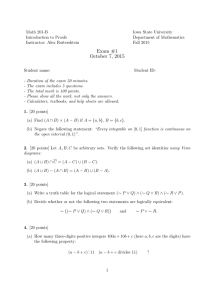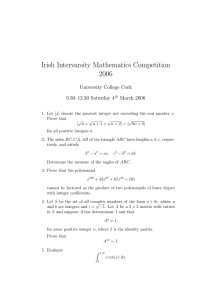Positive Integral solution of the Lens Formula Yue Kwok Choy This
advertisement
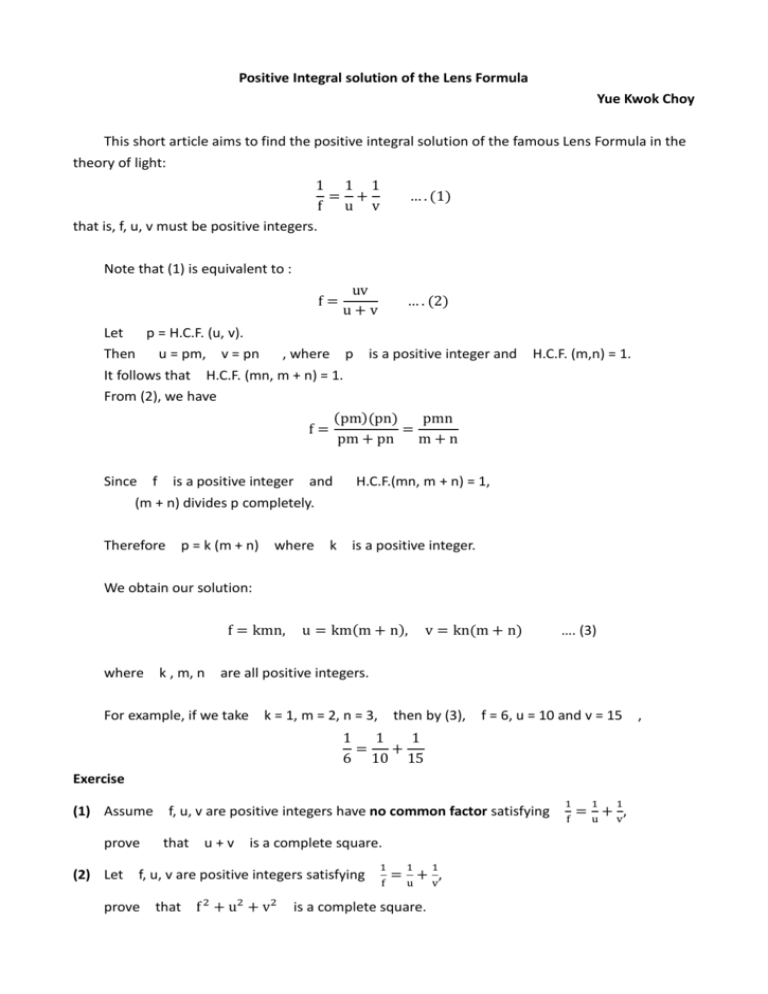
Positive Integral solution of the Lens Formula Yue Kwok Choy This short article aims to find the positive integral solution of the famous Lens Formula in the theory of light: 1 1 1 = + f u v that is, f, u, v must be positive integers. … . (1) Note that (1) is equivalent to : f= uv u+v … . (2) Let p = H.C.F. (u, v). Then u = pm, v = pn , where p is a positive integer and It follows that H.C.F. (mn, m + n) = 1. From (2), we have (pm)(pn) pmn f= = pm + pn m+n Since f is a positive integer and (m + n) divides p completely. Therefore p = k (m + n) where H.C.F. (m,n) = 1. H.C.F.(mn, m + n) = 1, k is a positive integer. We obtain our solution: f = kmn, where k , m, n u = km(m + n), v = kn(m + n) …. (3) are all positive integers. For example, if we take k = 1, m = 2, n = 3, then by (3), f = 6, u = 10 and v = 15 1 1 1 = + 6 10 15 Exercise (1) Assume prove (2) Let f, u, v are positive integers have no common factor satisfying that u + v is a complete square. f, u, v are positive integers satisfying prove that f 2 + u2 + v 2 1 f 1 1 = u + v, is a complete square. 1 f 1 1 = u + v, ,



